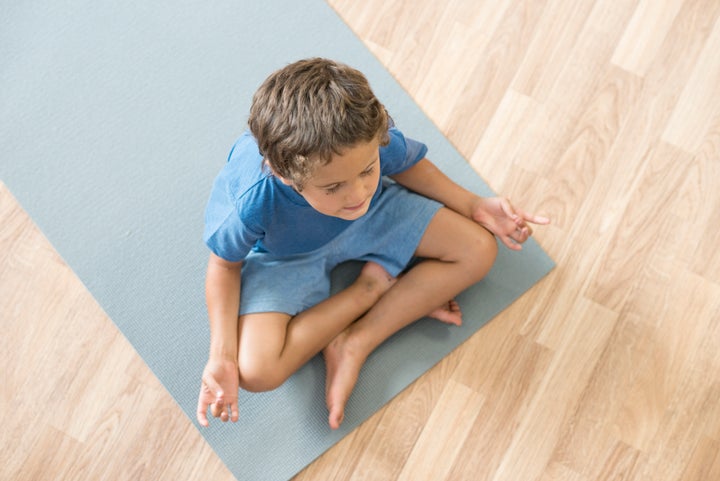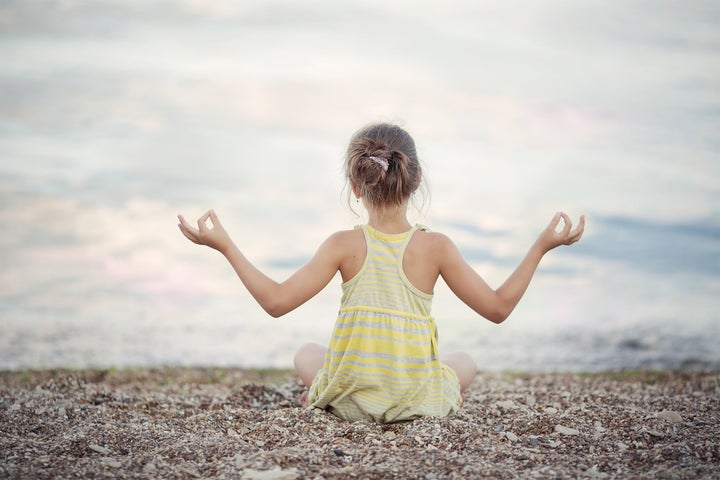Raising a family is more often chaotic than calm and finding any time in the day to go to the toilet in peace, let alone meditate, feels like a success.
But now the UK Department of Education has confirmed to The Huffington Post UK that it will be testing mindfulness classes, which focus on prioritising pupil’s happiness and wellbeing, for children as young as eight years old.
New lessons will teach breathing exercises, meditation and how to cope with stress and mental health problems like depression and anxiety.

If you’re wondering what mindfulness involves, a report by the Mindfulness all-party parliamentary group, Mindful Nation UK, explained: “Mindfulness involves sitting with your feet planted on the floor and the spine upright.
“The eyes can be closed or rest a few feet in front while the hands are in the lap or on the knees.
“The attention is gently brought to rest on the sensations of the body – the feet on the floor, the pressure on the seat and the air passing through the nostrils.
“As the thoughts continue, you return again and again to these physical sensations, gently encouraging the mind not to get caught up in the thought processes but to observe their passage.”
What if you want to start your own mindfulness practice at home? Here are six ways to try.
If you want to meditate:
Keep it simple.
One of the first things to keep in mind here is that you are working with children, not adults, so keep your expectations realistic about what you want to get from the session. Especially in terms of how long you can expect them to sit still and not fidget, let alone be mindful.
Get a breathing buddy.
Even for adults, sitting down and trying to focus ‘on the breath’ can be pretty difficult, when all your brain wants to think about is the long list of things that still needs doing in the day.
It is no different for your child. To help them focus on their breathing, get them to lie on their back and place a soft toy on their stomach. Then ask them to watch and be aware of the way the toy moves when they are breathing. This will bring presence of mind to their breathing.
Try a Spiderman meditation.
Sarah Rudell Beach creator of Left Brain Buddha told The Huffington Post, that her five-year-old son responds to anything superhero themed, so naturally meditation had to follow suit. SpiderMan meditation encourages children to activate their ‘spidey-senses’ and focus on all they can smell, taste, and hear in the present moment.

If meditation is not working:
Make a homemade calm jar.
You may have seen these glittery jars on the internet - filled with colourful liquid and glitter that you move around and shake like a snow globe - they are really simple to make at home.
If you are finding that keeping your child’s attention is too much of a struggle, ask them to watch the calm jar instead and you’ll be surprised how relaxing they find it.
Make everyday moments mindful.
Mindfulness doesn’t have to mean sitting down for long periods of time, and if you find that isn’t working for your kids, try incorporating into your everyday life instead.
For example, if you’re going on a walk, ask them to listen for things they haven’t noticed before. If you can, spend part of the walk in silence listening for sounds and animals, this encourages being present.
Practice gratitude.
In the same way as practicing mindful walking, you might find that gratitude is a good way to bring mindfulness into your family without trying to meditate. Try asking your children to share one thing they are grateful for every day.
Professor Mark Williams, former director of the Oxford Mindfulness Centre, says on the NHS website: “All this may sound very small, but it has huge power to interrupt the autopilot mode we often engage day to day, and to give us new perspectives on life.”